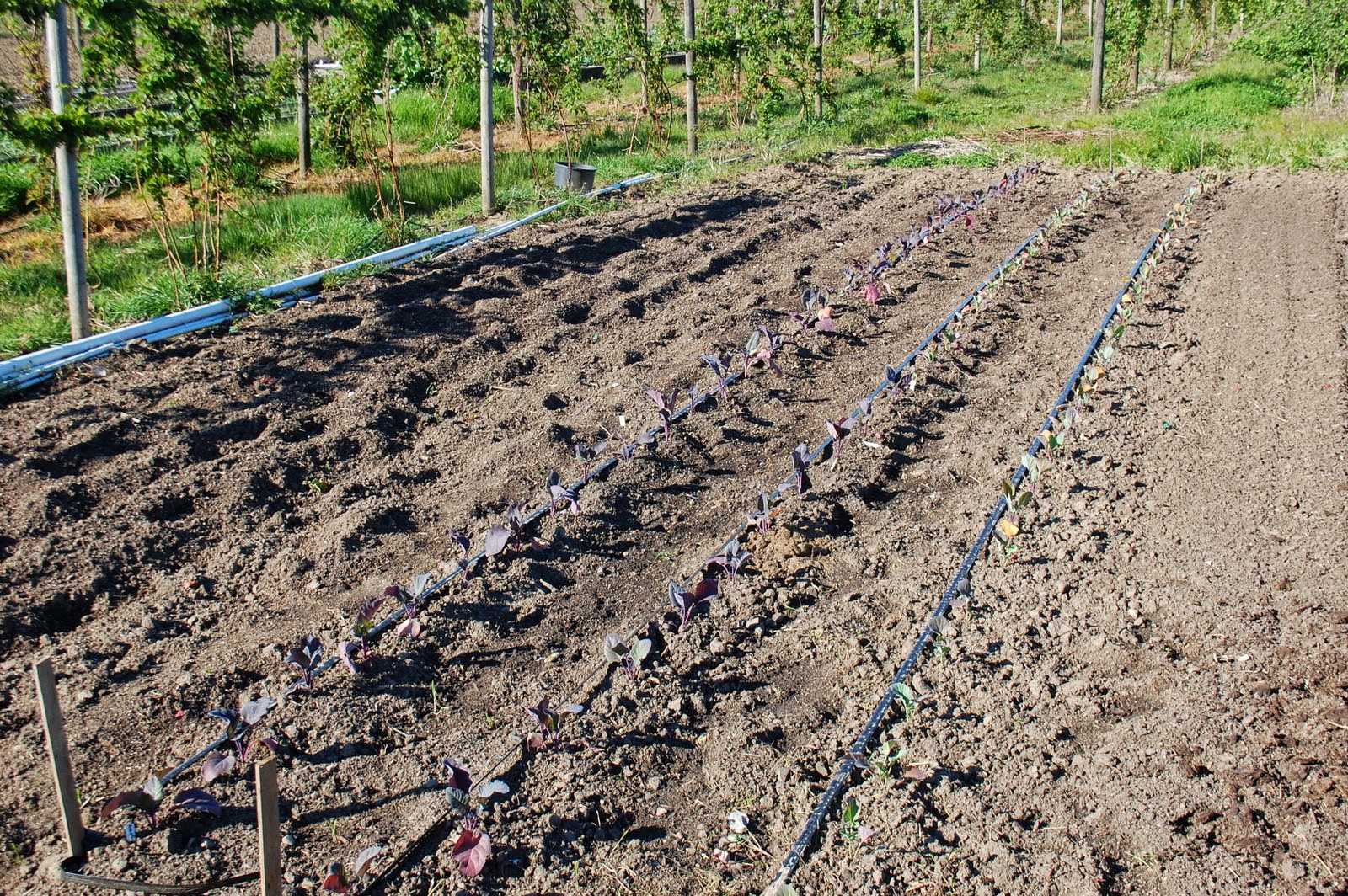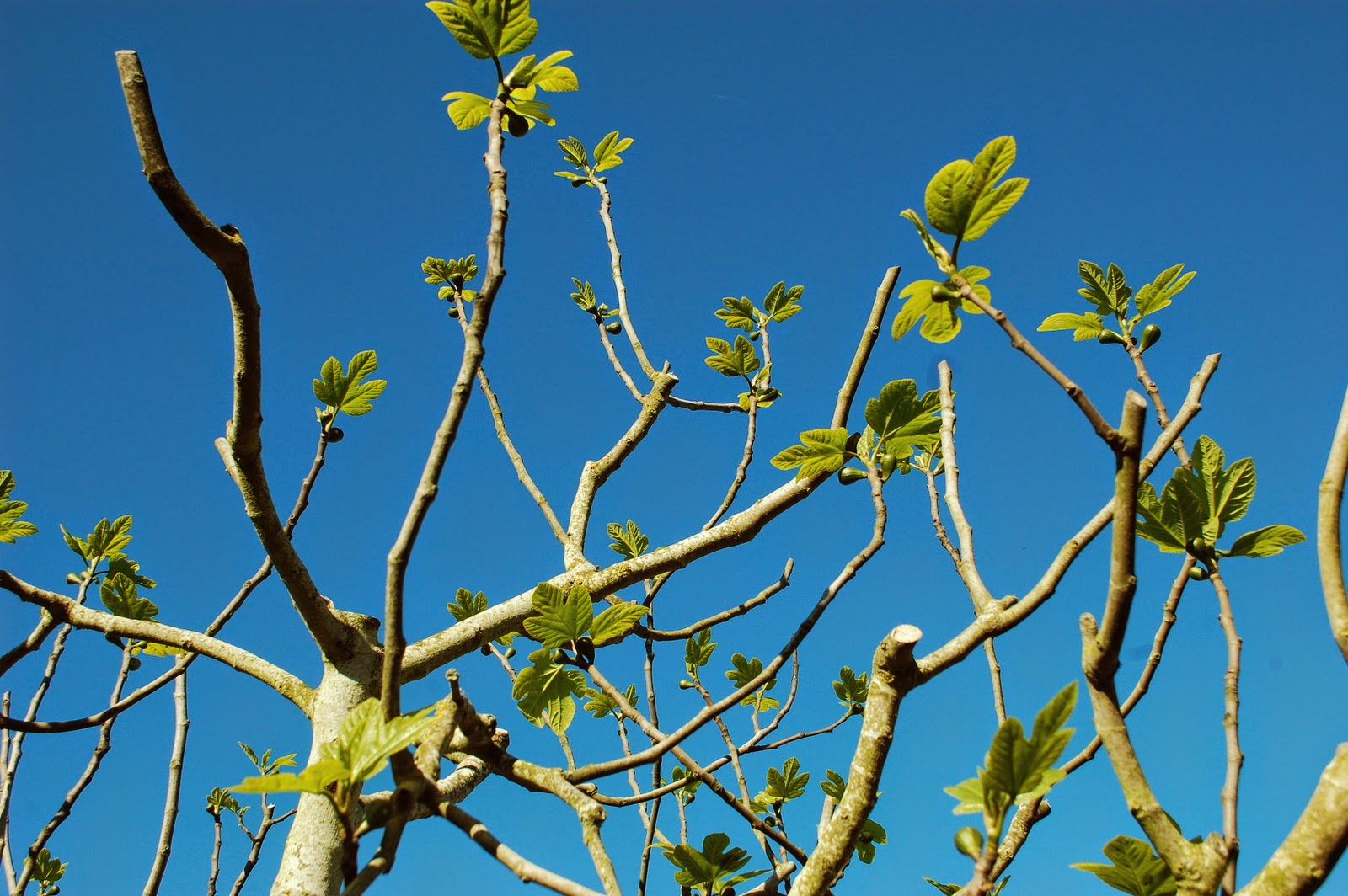 |
| Scott, Anna's husband on the left (they live at the farm) and Andrew, one of Lisa's sons, on the right "power" through some spring farm chores. |
 |
| Scott is smoothing out the hump in the middle of the field that resulted from the direction the field needed to be plowed this year. |
 |
| Andrew brought down his own LARGE lawn mower to mow between all the rows of berries and trees in the orchard. So much easier for us to get around without all the tall grass/weeds to wade through. |
 |
| A few purple sprouting broccoli made it through the winter. Very tasty right out in the field. |
 |
| Scott making progress. |
 |
| Andrew makes progress too. He has to fight off some of the berry canes. |
 |
| Florencio has planted a few of the different cauliflower, broccoli and cabbage in this bed where onions grew last year. Crop rotation is important when gardening. |
 |
| Likzy, Andrew's wife, helped plant our new selection of dahlias into these black pots. |
 |
| The kiddos don't seem to drive as safely as their dad does in the background. |
 |
| These petunias didn't have a very good germination rate. |
 |
| Lisa plants up some hanging baskets starting with trailing lobelia. |
 |
| We plant onions and shallots about 50 seeds per 4 inch pot. Then lightly cover them with our soilless germination mix. |
 |
| Emma just arrived home from kindergarten. Thanks for joining us in the greenhouse! |
 |
| Melon day. Cantaloupe, honeydew, several kinds and colors of watermelon are being seeded today. |
 |
| Our newest family member gets a kiss from his 2nd cousin, Angie. |
 |
| A few greenhouse cucumbers for the cuc lovers to snack on. |
 |
| A tad bit bright out here, don't you think??? |
 |
| Lisa is transplanting some Chinese Lanterns from their 50 cell pack flat to 4 inch pots. Their roots really will like all the new room. |
 |
| Some peony buds have ants crawling on them. Some don't. |
 |
| Lupine is starting to bloom. |
 |
| The dogwoods by the driveway are brilliant. |
 |
| These are underneath and haven't opened completely. |
 |
| One of the clematis at the farm is opening up, too. That's all for now. More to come, soon! |





















































